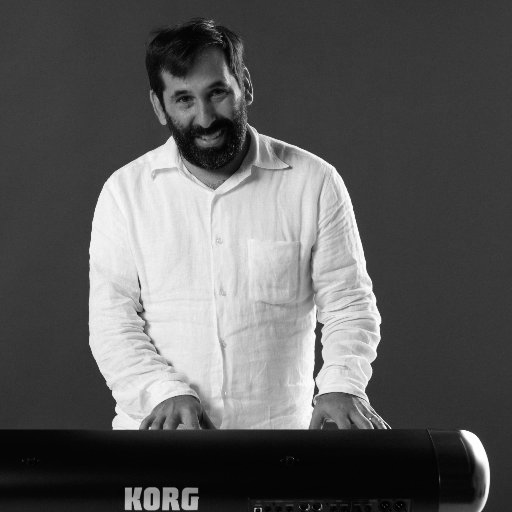This is how Bob Dylan’s just-barely-in-time and just-possibly-plagiarized Nobel Prize lecture begins—
—not with some introductory remarks (“When I received the Nobel Prize for literature…” in Dylan’s sui generis mumble), but with a painted outline of the artist quickly filled in with blue and gold, which just happen to be the signature colors of the Nobel Foundation’s website. The little animated prelude resembles a production company’s vanity card at the front or tail end of a movie or TV show, signaling that this is less a lecture than a dramatic production, and a carefully designed one at that.
The lecture is the homework assignment all laurates must complete, and the source of the Nobel Foundation’s extremely high-level, historically relevant, um, content marketing. As the Nobel Foundation Statutes insist: “It shall be incumbent on a prizewinner, whenever this is possible, to give a lecture on a subject relevant to the work for which the prize has been awarded.”
But Dylan did something strange and unprecedented with the assignment: He turned it into a vlog. I strongly suspect he wouldn’t call it a vlog, a hideous contemporary word, but that’s what it is. Dylan may have had an older model in mind. The pianist behind the clip’s quiet jazz says that Dylan’s manager told him: “Have you ever watched those old clips of Steve Allen interviewing people, when he plays the piano?” and “Well, we need some of that kind of music.” The most famous of these clips is when Allen backed Jack Kerouac as he read from On the Road. One senses that Dylan was looking to produce something as cool and jazzy and Beat as that… but the form it took was pure 2017.
Note: Dylan isn’t reading from his Great American Novel; he’s reciting a rambling, self-reflective mashup of musical memoir and book report (Buddy Holly! Moby Dick! The Odyssey!), laid down in a freeform style and uploaded to YouTube. If you must consult the text, you can read the words in close captioned text at the bottom of the screen. It’s a bit like his fun Theme Time Radio Hour. It’s on-demand, multimedia Dylan, and you experience it at your own convenience. You might also notice, while we’re on the subject, that the rest of the Nobel Prize winner videos live solely on Nobelprize.org. This suggests, to me at least, that the Nobel people suspected that this particular clip had legs, and would travel far and wide if it strolled over to a popular platform such as YouTube.
I love Dylan’s stuff, although his vlog lacks gravitas. The overall effect seems like a final project from a brilliant high school student who has been guided by a sensitive English teacher. A classic Nobel lecture it’s not. Back in college, I read William Faulkner’s classic short Nobel speech, in which he says the “writer’s privilege” is “to help man endure by lifting his heart, by reminding him of the courage and honor and hope and pride and compassion and pity and sacrifice which have been the glory of his past.” That was a Nobel lecture. Thanks to the Nobel Website, you can listen to it.
But I think we should we celebrate this vloggery. Compared to Dylan’s colorful offering, Faulkner’s talk is a rather dull affair, not a whiff of sound or fury anywhere. Dylan, on the other hand, created a lively multimedia experience. It’s a sensation—and when’s the last time a Nobel lecture made lots of people feel something? Perhaps it is the Next Stage of Nobel lectures, and an attempt by both the laurate and the foundation to do something that would break through the seemingly boundless clutter of content out there. What had been an officious and somewhat dull obligation can now be seen as a design challenge. What might a “lecture” become in the hands of a truly daring writer or thinker? In truth, Dylan’s vlog is daring only in the context of a pile of exclusively somber pronouncements from the Nobel podium.
Some might object that literature and design should stay far away from each other—that turning the Nobel lecture into an occasion for creative performance is the worst thing that could possibly happen to an author. Literature, they’d contend, is about making words live on the page. Period. “Write out the lyrics of a song you love,” writes Glyn Maxwell in On Poetry. “If you strip the music off it it dies in the whiteness, can't breathe there.” One immediately thinks of Dylan.
In fact, if we were to judge Dylan merely by his words, there’s no way he would have won a Noble Prize. I remember reading Dylan’s Chronicles: Volume One, and it seemed to me—at best—“a weird, rather under-edited autobiography.” What wins the day is his words in conjunction with his voice and the music and the undimmed aura of his persona. Perhaps he understood this in some capacity, and thus put together the un-lecture that has us talking and thinking and oped-ing right now.
In the case of his Nobel vlog… Dylan really did win the day. And it seems design did as well. Whether or not it’s a win for literature—that’s another matter, and it just might spark another essay.

